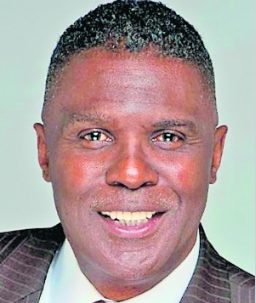By Glenn Ellis
Every two seconds someone has a stroke, and one in six people will suffer a stroke in their lifetime. Stroke is the third leading cause of death worldwide, with over six million people dying from strokes each year. With an aging global population, the incidence of stroke is set to rise.
A stroke is often described as the brain equivalent of a heart attack; blood supply to part of the brain is cut off, leading to cell death and potentially life-threatening brain injury. The two main types of stroke are ischemic, where an artery to the brain is blocked, and hemorrhagic, when a blood vessel ruptures.
The more common kind, called ischemic stroke, is caused by a blood clot that blocks or plugs a blood vessel in the brain. The other kind, called hemorrhagic stroke, is caused by a blood vessel that breaks and bleeds into the brain. “Mini-strokes” or transient ischemic attacks (TIAs), occur when the blood supply to the brain is briefly interrupted.
People having a mini stroke can experience a variety of symptoms. The most important are weakness on one side affecting the face, arm or leg – or all three – or speech disturbance, which can be slurring or decreased speech fluency or comprehension. These are the typical symptoms, but sometimes people can experience visual loss, dizziness or vertigo.
A study from the University of Rochester Medical Center found that at least half of individuals over the age of 60 will experience one mini-stroke in their lifetime.
Anyone can have a mini stroke but it is more frequent in patients who have risk factors for blood vessel damage: old age, high blood pressure, diabetes, smoking and raised cholesterol levels.
Most symptoms of a TIA disappear within an hour, although they may last for up to 24 hours. Because you cannot tell if these symptoms are from a TIA or a stroke, you should go to the hospital right away. TIAs are often a warning sign for future strokes. TIAs typically do not cause permanent brain damage and do not immediately lead to death.
These symptoms may go away in as little as a few minutes or last as long as 24 hours. About 40 percent of people who have them will go on to have an actual stroke, and half of these strokes occur within two days of the TIA. While mini strokes themselves improve, a mini stroke is a sign that you are at risk of having a stroke.
Within three months after a TIA, 10 percent to 15 percent of people will have a stroke, but most studies show that nearly half of all strokes occur within the first two days after a TIA!
The tragic consequences of stroke can be invisible. Most people think that stroke causes weakness or movement problems. Although paralysis is a visible consequence of stroke, we find that hidden causes of stroke account for most of a stroke survivor’s disability, hardship, and burden. A stroke survivor who can walk may still have problems communicating easily-finding words, speaking clearly, understanding speech in a noisy environment; or make errors navigating in a familiar or predictable environment like a mall or neighborhood.
Depression, cognitive impairment, impaired motor function and balance, and visual and communication problems have all been reported as long-term outcomes of stroke. Around one third of people who survive are left with a permanent disability.
Make no mistake: A stroke is a medical emergency. When a stroke happens, blood flow to the brain stops. Within minutes, brain cells begin to die.
Symptoms that come on suddenly and without warning could signify a stroke. The term “FAST” is an abbreviation to help you recognize some common stroke symptoms.
F for Face: If you notice a droop or uneven smile on a person’s face, this is a warning sign.
A for Arms: Ask the person to raise their arms. It’s a warning sign if the arm drops down or isn’t steady.
S for Speech: Ask the person to repeat something. Slurred speech can indicate that the person is having a stroke.
T for Time: Act fast if someone is experiencing stroke symptoms. Call 911.
Since it doesn’t cause permanent damage, it might seem like no big deal. But ignoring a mini stroke is a big mistake. The important message is; if you have sudden onset of weakness or speech disturbance seek urgent medical attention even if the symptoms improve quickly.
Remember, I’m not a doctor. I just sound like one.
Take good care of yourself and live the best life possible!
The information included in this column is for educational purposes only. It is not intended nor implied to be a substitute for professional medical advice. The reader should always consult his or her healthcare provider to determine the appropriateness of the information for their own situation or if they have any questions regarding a medical condition or treatment plan.
Glenn Ellis, is a Health Advocacy Communications Specialist. He is the author of Which Doctor?, and Information is the Best Medicine. For more good health information, visit: www.glennellis.com




